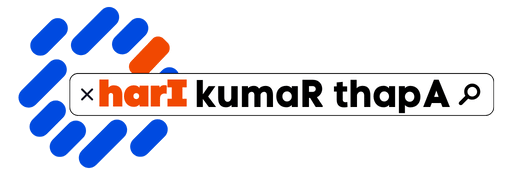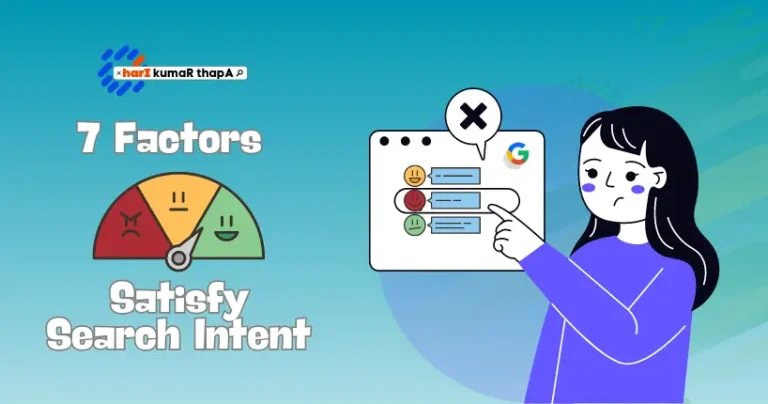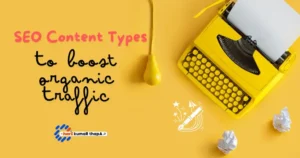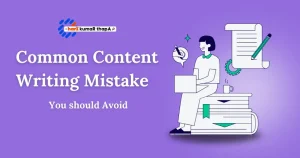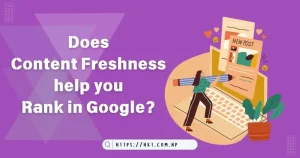Marketers have long heard that ‘content is king.’ However, creating content that satisfies search intent is the key to success in Google SERPs.
These days, SEO strategy involves more than just building backlinks and stuffing keywords on content to rank a page. You must ensure your content matches search intent to drive and retain organic traffic in the long run.
In this article we will go throgh stages to writing content that satisfies user’s intent and engages effectively.
7 Factors to Satisfy Search Intent

User’s online search is intent-based, and you must provide relevant content that matches their search. Below are 7 factors to take into cosideration to satisfy user intent:
1. Keyword Research
According to Ahref’s research, approximately “96.55% of Content Gets No Traffic From Google.” The number one reason is the lack of search demand. There is no point in chasing the top page in Google without search volume.
It is crucial to research keywords or queries you want to rank for before creating content.
You must pick your primary, secondary, and supporting keywords for the search term and be ready to strategically incorporate them into your content. This will improve relevance and increase visibility of your website for multiple keywords in search engine results.
2. Understanding User Intent
Search Engine algorathims are constantly looking to match results with user’s query; which is why it is importat to understand it.
After choosing a keyword based on search volume, competiton and difficulty, you must first understand the intent behind the query. And search intent is divided into 4 types:
- Informational
- Navigational
- Commercial
- Transactional
It is important to know what the user is searching for before creating a content. One simple way to check this is by looking what pages are google search promoting.
If the user does not find the website relevent or helpful, this will increase bounce rate (Leave your site). And if they visit another site then this provides bad signal decreasing your Google ranking.
3. Write Quality Content with appropriate Content-Type
Before creating content you must select content type such as an Article, Landing Page, Video, or Listicals, whichever is relevant to your query.
It is important to select proper content type as SERPs are full of lost content. These pages never gets indexed or ranked.
4. User-Friendly Structure
You must create a structure that is easy to navigate for both users and crawlers.
Dividing your content into Topics and Sub-Topics will help you find content more quickly, improving user experience.
5. Add Multimedia
Provide more information through Images, Videos, Infographics, PDFs, tables, and other media. This will help users stay on your website longer, reducing your Bounce Rate.
Images and Videos are good ways to provide more information.
6. Relevant Links
Google is always looking for relevant and helpful content; one way to do so is to cite your resources and relevant articles with more information.
Blog articles providing internal links and references to their sources usually rank higher, which is considered one of Google’s ranking factors.
Providing valuable and relevant links related to your article
7. Regular Update
Make sure your content is updated regularly with relevant keywords. You must include new information as it is updated.
look for these details within a site where
How to Know a User Intent?
To know user intent, you can simply Google search your query to check what kind of pages are Google ranking on search results. Check out the examples below.
Example: Commercial Intent
For the keyword “SEO expert in Nepal,” you can see mostly freelancers or service pages with popups with commercial intent.
Prajwal Karki’s page, is at the top of Google. Performing free audits, templates, and more to attract customers to sell his service and add an email list.
Users are mostly trying to hire SEO experts or looking to purchase services. They are researching before buying a service.
Example: Informational Intent
Adding “How to” in front of the keyword “SEO expert in Nepal” changes the overall user intent on Google.
Long tail keyword like “How to become an SEO expert in Nepal,” is an informational intent. As search is looking for specific answer to a query that need indepth explaination.
Blog posts and articles are recommended and top-performing type of content to satisfy informational search intent.
